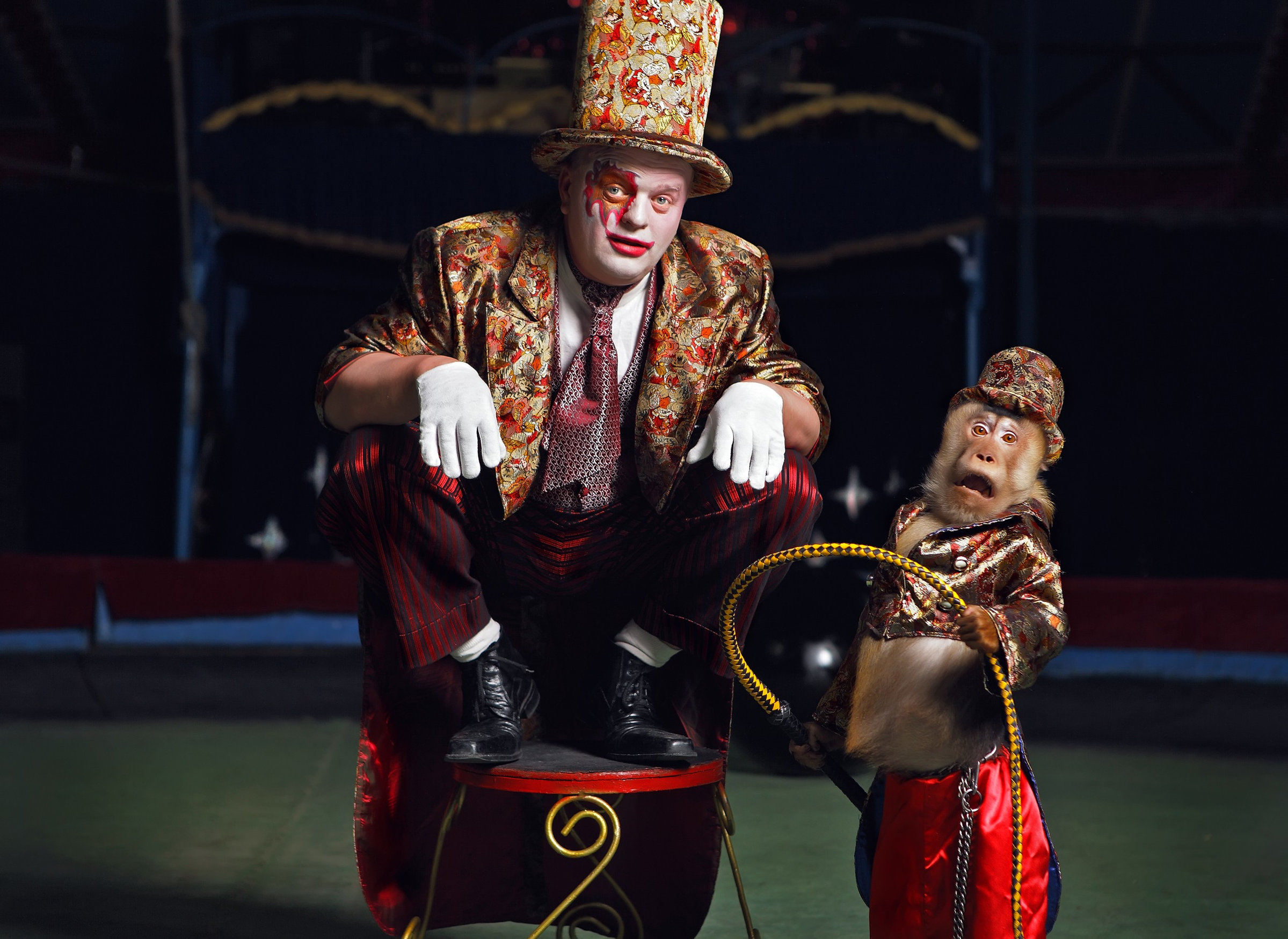The History of Clowns

By: FUN Monster
Performing to entertain people has a long and varied history, and clowns have been a part of this history for hundreds of years. Even in ancient times, people would wear masks and costumes and perform for the royal or imperial courts. Clowns are also associated with circuses, which have a long history as well. A number of famous clowns have been instrumental in developing the signature characteristics of clowns, such as their clumsiness and their white face paint with bright, broad smiles.
The clown-like characters who performed for royalty in ancient eras were often called jesters. These professional performers had the responsibility of amusing and distracting the kings and queens as well as other members of high society. Both men and women worked as jesters, and some jesters even accompanied kings and armies into battle to help calm the warriors' nerves. It was quite common for jesters to die on battlefields.
- Jesters also engaged in verbal attacks on the enemy in attempts to demoralize opponents in war.
- Jesters in the Middle Ages were responsible for reinforcing religious and cultural values for their audiences.
- Court jesters enjoyed expansive freedom of speech, and they often were able to use humor to speak out against royal policies and ideas.
Philip Astley created the first circus in 1768, and his shows featured horses performing in rings. Astley also created a circus clown who was named Billy Buttons. In the Astley circus performances, Billy Buttons was a tailor who would try to ride the horses and would always fail in funny ways. The crowds loved Billy Buttons so much that his performances were expanded to become part of other circus acts.
- Astley's horse and clown shows were popular and were a precursor to modern circuses, but Astley never called his shows by this name.
- Circus clowns eventually began combining fun skills such as juggling with their slapstick comedy routines.
- The Ringling Bros. and Barnum & Bailey Clown College was created in 1968.
The word "clown" was first noted in the English language in the 1560s, when it was used to describe a rustic, boorish peasant. Drawing on this origin, Charlie Chaplin helped to popularize the hobo type of clown with his "Little Tramp" character. He used this character in more than 50 films, most of them silent films. With the rise of movies and then television, clowns became more popular than ever, finding new audiences on screen.
- Joseph Grimaldi receives credit for inventing the modern clown in the early 1800s, although Grimaldi's personal life was full of tragedy and sadness.
- The character of Pierrot was a white-faced sad clown who became popular in melancholy pantomimes starting in 1660 in Paris.
- Clowns can be a source of comfort because their funny performances are often a mirror that reflects the audience's inner struggles.
- The hobo clown was an American character that was based on homeless drifters who roamed the countryside.
- Chaplin's "Little Tramp" character evolved significantly over the years Chaplin performed.
- The word "clown" may come from an Icelandic word that means "a clumsy person."
- Grock was a famous clown played by Charles Adrien Wettach, who performed in stage shows with musical instruments.
- Shakespearean clowns were featured often in his plays, including The Comedy of Errors and Twelfth Night.
- William Shakespeare used the term "clown" to describe various foolish characters written into his plays.
- Auguste clowns of the 1860s used limited makeup, colorful wigs, and oversized costumes. They were supposed to be unintelligent and clumsy.
Sinister clowns are a relatively recent creation, but there have always been melancholy undertones behind clown performances. Applying garish makeup and wearing bright, oversize costumes makes it possible for performers to hide a sad interior behind the loud exterior. Some researchers have theorized that the history of clowns as jesters might have paved the way for the development of evil clowns. If court jesters failed to make the king laugh, there was often a hefty price to pay. Some jesters had their facial muscles cut so they could no longer frown and had to smile all the time. An evil clown is a manifestation of the dark side of clowns, which have always flirted with manic behavior that bordered on perversion.
- John Wayne Gacy, a convicted serial killer, didn't commit his crimes while wearing a clown costume, but he was registered as a clown named Pogo.
- Coulrophobia is the name for the fear of clowns.
- Creepy clowns have been featured in movies such as He Who Gets Slapped and Laugh, Clown, Laugh.
- Stephen King's It featured an evil clown named Pennywise who was responsible for murdering children.
